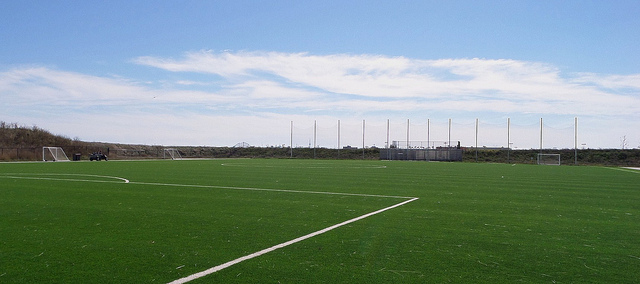Former Director of Soccer Development for the Maryland State Soccer Association with nearly 20 years of service to the youth in that state, Graham Ramsay was one of the first National Staff Coaches for U.S. Soccer and has written several books and numerous articles in top publications. His latest book, SOCCER FOR GIRLS has sold nearly 60,000 copies worldwide. Graham has spent extensive time traveling with soccer teams in Brazil as well as coaching in Saudi Arabia, Bahrain and across Europe. Graham wants to share this knowledge with any group, club, association or school. Contact him directly at [email protected] or 410-708-7177 for details.
Pitches
The vast majority of players & coaches just accept any surface that is relatively flat, stone/dirt free and flat. We just accept a pitch for what it is – a playing surface to facilitate a game, come rain or come shine, mud, snow and sometimes ice.
Amateurs just want to play but at a more refined level a pitch can be a valuable asset in giving your team a tactical advantage. Let me give you a real life example – A college nearby where I live has two pitches – “turf” and a beautiful Bermudan grass surface. Maybe the best two pitches in the greater Washington DC area and yet they have no meaning tactically to it’s players or coaches. No wonder they struggle season after season.
A pitch can’t directly win you a game but knowing your opponent’s surface can help. For example, your opposition plays only on grass and knowing that you play them on “turf” and all your practices are on “turf.” Therefore the first 15 minutes of the game are critical. While they are get adjusted to the alien surface, you are winning the game.

Professional teams are fully aware of the power of the size and the condition of the playing surface. Let me give you some examples of winning a positive edge with some examples :
* Oxford United 2015. Mike Appleton takes over managing a team struggling near the foot of their division. Being a bright practical coach he demanded that the pitch was shrunk especially in its width so that they could compete and take away space from their more talented opponents. His tactic helped change their season and confidence to go on a winning run.
* Glasgow Rangers vs. Dynamo Kiev (ECL). Graehme Sourness, the coach, after a first leg loss to Kiev, put the Ukrainian win down to the wide play of both their overlapping backs & wingers. Come the return leg at Ibrox Stadium, Glasgow, Sourness had the width of the pitch pulled in by several yards and it had the desired effect of negating their width advantage and allowing Rangers to win the game.
* Derby County years ago under Brian Clough sometimes watered the pitch as though a monsoon had attacked the area. He had both a physical & skillful team which could overwhelm a more lightweight, skillful team.
* Teams that play BARCA would if it was on their home game deliberately would let the grass in wide areas grow longer as that would slow the speed of play down so buying time to congest & force the play into central areas.
It amazes me that so-called “soccer” colleges and clubs have so little understanding of space & surface when it comes to tactics even to adjust to climatic/field conditions in a game. The conditions can radically change with a downpour or a breeze becomes a gale.
Good coaches and players adapt. Poor ones just bitch, moan to a loss. So join the “Appleton/ Sourness Club” and get smart.
